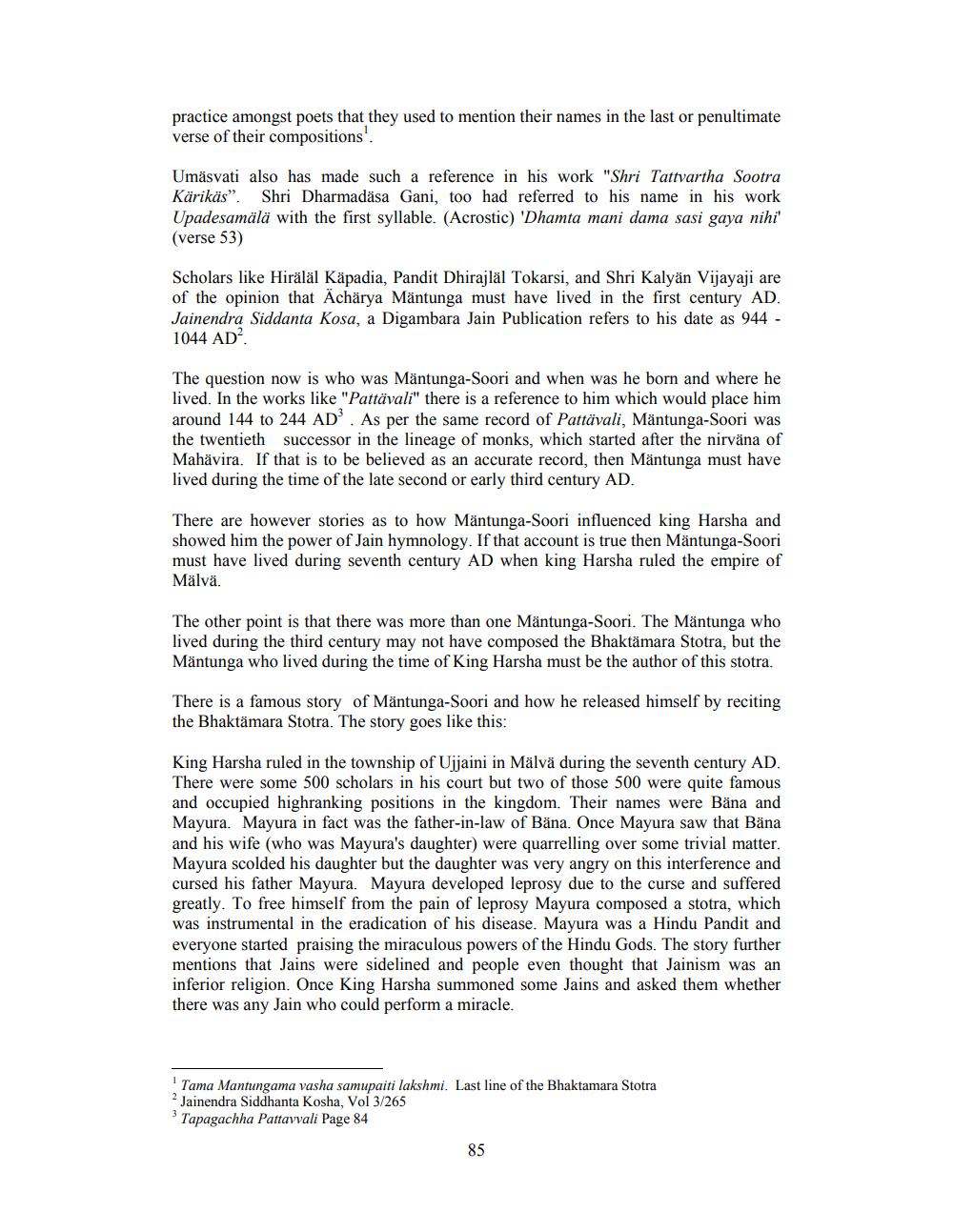________________
practice amongst poets that they used to mention their names in the last or penultimate verse of their compositions'.
Umäsvati also has made such a reference in his work "Shri Tattvartha Sootra Kärikäs". Shri Dharmadása Gani, too had referred to his name in his work Upadesamälä with the first syllable. (Acrostic) 'Dhamta mani dama sasi gaya nihi' (verse 53)
Scholars like Hiräläl Käpadia, Pandit Dhirajläl Tokarsi, and Shri Kalyän Vijayaji are of the opinion that Ächärya Mäntunga must have lived in the first century AD. Jainendra Siddanta Kosa, a Digambara Jain Publication refers to his date as 944 - 1044 AD'.
The question now is who was Mäntunga-Soori and when was he born and where he lived. In the works like "Pattävali" there is a reference to him which would place him around 144 to 244 AD'. As per the same record of Pattävali, Mäntunga-Soori was the twentieth successor in the lineage of monks, which started after the nirvana of Mahävira. If that is to be believed as an accurate record, then Mäntunga must have lived during the time of the late second or early third century AD.
There are however stories as to how Mäntunga-Soori influenced king Harsha and showed him the power of Jain hymnology. If that account is true then Mäntunga-Soori must have lived during seventh century AD when king Harsha ruled the empire of Mälvä.
The other point is that there was more than one Mäntunga-Soori. The Mäntunga who lived during the third century may not have composed the Bhaktămara Stotra, but the Mäntunga who lived during the time of King Harsha must be the author of this stotra.
There is a famous story of Mäntunga-Soori and how he released himself by reciting the Bhaktämara Stotra. The story goes like this:
King Harsha ruled in the township of Ujjaini in Mälvä during the seventh century AD. There were some 500 scholars in his court but two of those 500 were quite famous and occupied highranking positions in the kingdom. Their names were Bäna and Mayura. Mayura in fact was the father-in-law of Bäna. Once Mayura saw that Båna and his wife (who was Mayura's daughter) were quarrelling over some trivial matter. Mayura scolded his daughter but the daughter was very angry on this interference and cursed his father Mayura. Mayura developed leprosy due to the curse and suffered greatly. To free himself from the pain of leprosy Mayura composed a stotra, which was instrumental in the eradication of his disease. Mayura was a Hindu Pandit and everyone started praising the miraculous powers of the Hindu Gods. The story further mentions that Jains were sidelined and people even thought that Jainism was an inferior religion. Once King Harsha summoned some Jains and asked them whether there was any Jain who could perform a miracle.
Tama Mantungama vasha samupaiti lakshmi. Last line of the Bhaktamara Stotra ? Jainendra Siddhanta Kosha, Vol 3/265 Tapagachha Pattavvali Page 84
85




